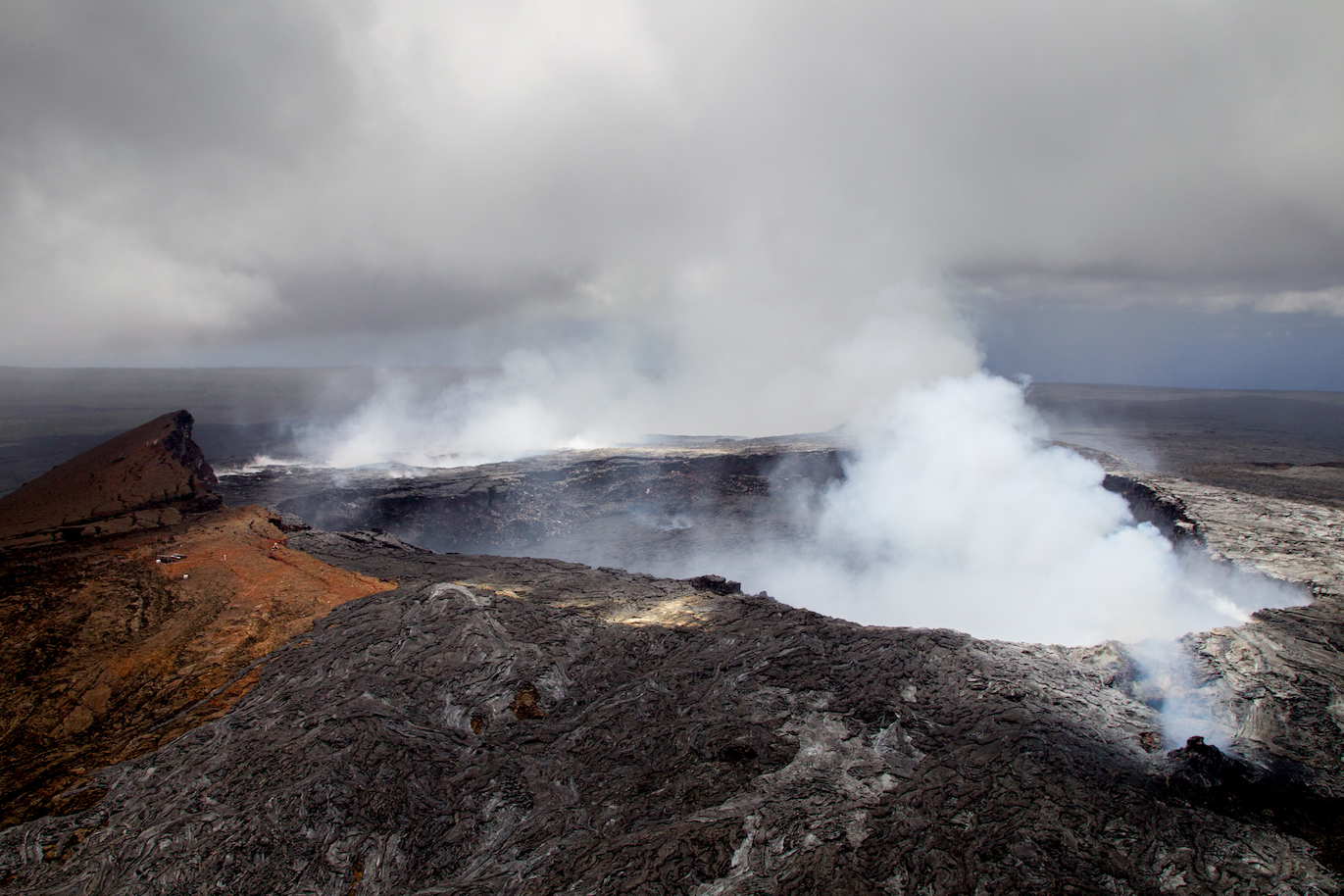
Why vog from the Kilauea eruption poses such a health threat
Residents of Hawaii’s Big Island have been evacuating since the first fissures from the Kilauea volcano starting spewing up lava and sulfur dioxide earlier this month.
After several eruptions, earthquakes, and even more fissures opening on the island, lava was recorded making its way to the ocean and sending clouds of toxic laze skyward.
Laze occurs when hot lava meets the ocean and a dangerous mixture of hydrochloric acid and volcanic glass particles results.
But now, residents have been warned of yet another hazard from Kilauea’s eruptions. Vog is another harmful mixture of gases and vapors that form a heavy volcanic smog.
Vog is created by vapor, carbon dioxide, and sulfur dioxide gas released from Kilauea’s vents. When the gases and vapor mix with sunlight, it creates a haze that can cause serious respiratory problems.
Sulfur dioxide emissions have more than tripled since Kilauea first started erupting.
Tradewinds, which are expected to die down this weekend, have been blowing the vog offshore but with the increasing emissions from the volcano, more and more haze is being released and residents continue to be affected.
“Everyone is having symptoms now on some level,” Josh Green, a state senator and emergency room physician, told the Daily Mail.
Those without respiratory or health issues may experience burning eyes, headaches, and sore throats, but people with asthma could be hospitalized.
Although the trade winds are good news for Big Island, for Guam it’s a different story. Recent volcanic haze has stretched across the Pacific and according to CNN, threatens people living on the Mariana Islands.
Guam has issued air quality warnings to residents and mariners who could face visibility issues due to the volcano’s emissions.
Big Island continues to deal with lava flow, ash, dangerous gases, earthquakes and now vog, and residents near lava flows have been warned to leave now or face getting trapped.
Kilauea has been extremely active and its current eruption cycle has been going on since the 1980s. There’s no telling when the volcano’s activity will stop as Kilauea’s eruption is one of the longest-lived eruptions in recorded history, according to the National Park Service.
—
By Kay Vandette, Earth.com Staff Writer













